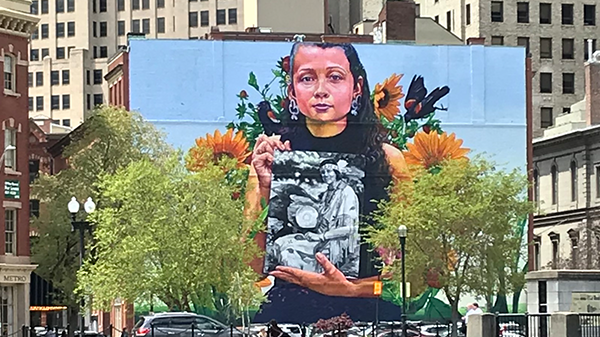By Lori E. Kniffin
Kansas State University
Book Information
Publicly Engaged Scholars: Next Generation Engagement and the Future of Higher Education. Edited by Margaret A. Post, Elaine Ward, Nicholas V. Longo, & John Saltmarsh. Sterling, VA: Stylus Publishing. 2016. ISBN: 978-1-62036- 264-8. 286 pp. Paperback, $35.
Keywords
social justice, social change, higher education, community-engaged scholarship
DOI
10.21768/ejopa.v6i1.132
Author Note
Lori Kniffin, Staley School of Leadership Studies, Kansas State University.
Correspondence regarding this article should be addressed to
Lori Kniffin
Institute for Community and Economic Engagement
University of North Carolina at Greensboro
MHRA 3708
1111 Spring Garden Street
Greensboro, NC 27402-6170
[wp-svg-icons icon=”phone” wrap=”i”] (336) 334-4661 [wp-svg-icons icon=”envelop” wrap=”i”] lekniffi@uncg.edu
The purpose of higher education in the U.S. is rooted in developing an educated citizenry to strengthen democracy. However, this appreciation of higher education as a public good is eroding. The shift in society’s perception of higher education as a private good has led to a decrease in funding for higher education and an increase in student debt. Consequently, this has narrowed access to higher education and heightened students’ and parents’ expectations about the college experience and outcomes. If such trends continue, the public purposes of higher education will be lost. The civic purposes of higher education must be renewed to build a stronger democracy. Fortunately, there are scholars, practitioners, community colleagues, administrators, and students who are committed to addressing public problems through knowledge generation and practical application. They are publicly engaged scholars.
Although a retrospective, Publicly Engaged Scholars: Next Generation Engagement and the Future of Higher Education also looks forward to a new generation of scholars that must push for transformation in higher education. The book builds upon the Next Generation Engagement Project, which began in 2009. Several contributors to this project started collaborating in partnership with the New England Resource Center for Higher Education (NERCHE) to explore next generation engagement, leading to conference presentations and, ultimately, Publicly Engaged Scholars. The book defines next generation engagement as “a collaborative engagement paradigm of teaching, learning, and scholarship in which faculty, students and community partners co-create knowledge and learning” (p. 4). Engaged scholars face challenges of marginalization, structural barriers, and identity fracturing; however, the book’s editors show how engaged scholars have forged unique professional pathways and are building collaborative networks.
The four editors include a pioneer of the field and three next generation scholars who come to their engaged work through diverse pathways. Service-learning was central to Nick Longo’s undergraduate and graduate education. Margaret Post is a community practitioner trained in community organizing. Elaine Ward contributes her experiences as an immigrant to the U.S. and first-generation college student, as well as a curator of narratives. John Saltmarsh, a pioneer of civic engagement, entered this work as a traditional scholar and teacher. Margaret, Elaine, and Nick all acknowledge John’s role in developing their identities as engaged scholars through mentorship and intellectual guidance. Together, their diverse experiences have prepared them to address the future of the civic engagement movement and provide narratives that illustrate the experiences of next generation scholars.
The content of Publicly Engaged Scholars showcases the inheritance, narratives, and future of the next generation of scholars. “Part One: The Collaborative Engagement Paradigm” outlines the historical context and current tensions that shape the environment of engaged scholars. This section highlights major events in U.S. history that have influenced trends in higher education and identifies major contributions to the field such as the establishment of coalitions and key publications. The authors illustrate the tensions that engaged scholars face when seeking promotion and tenure, leadership positions, recognition, or increased compensation due of their nontraditional forms of service, scholarship, and teaching. “Part Two: New Public Scholars” comprises the central hope of the text. Across five chapters, readers learn the stories of 22 next generation scholars and their journeys to engagement. These narratives of practitioners, researchers, teachers, administrators and boundary-spanners in and out of the academy, as well as undergraduate and graduate students, are individually crafted but illustrate common themes such as boundary spanning, fracturing of identities, securing and widening legitimacy, marginalization and validation, finding mentors, and creating new structures. Lastly, “Part Three: The Future of Engagement” describes new models for future engaged work, such as including students as colleagues, addressing neoliberalism, and altering organizational structures.
The call for transformation in higher education resonates throughout the book. The authors make clear that academics need to work alongside community stakeholders to generate knowledge and then disseminate it in broader ways (e.g., blogs, videos, websites, or community theater). Ironically, the very format of this publication—a book—does not model fully the behaviors it calls for. The limitation of printed content represents the struggle engaged scholars face when trying to push the margins of their work. The movement of engaged scholarship must find ways to mark success beyond traditional measures of published books, articles, and reports or conferences and coalitions attended. If scholars continue to speak only to themselves through such means, they will continue down a path leading ultimately to a society that deems academia as irrelevant. Although Publicly Engaged Scholars includes a variety of voices, it lacks the ability to be heard by diverse stakeholders and thus is somewhat incongruent with the call the authors make for change. For instance, in addition to this book, an interactive website, videos, or art could help bring these narratives to different audiences.
Emerging scholars, including myself, who read this book will find its greatest contribution to be in the description of the landscape of engaged work. It is difficult to walk away from the book without understanding the responsibility emerging scholars have to push the margins, seek new systems of legitimacy, and be true to their values along the way. The collection of stories encourages—if not urges—the reader to pay attention to the historical context of civic engagement, while clearly outlining the present tensions. I feel as though I am a generation behind the 22 scholars featured in this book. Perhaps I am part of the millennial generation of engaged scholars who have had the opportunity to make engaged scholarship core to my research in my graduate education and early career, unlike many before. By the time I hand off the torch to a new generation, I can imagine clearer pathways to engaged work, more blurred lines between community and academia, and more acceptable ways to generate and disseminate knowledge.
The publication of the book is well timed. Campus Compact just celebrated its 30th anniversary, and it has been 20 years since Edward Zlotkowski (1995) wrote his influential article “Does Service-Learning Have a Future?” Now a new project—the Service-Learning & Community Engagement Future Directions Project—led by Patti Clayton, Sarah Stanlick, Edward Zlotkowski, and Jeffrey Howard is engaging multiple voices in the future directions of service-learning and community engagement (http://www.slce-fdp.org). As major contributors to the community engagement movement near the end of their formal careers, new scholars are in positions of influence, and an even younger generation is recognizing service-learning and community engagement as drivers of their careers. For example, the International Association for Research on Service-Learning and Community Engagement’s Graduate Student Network and Imagining America’s Publicly Active Graduate Education Fellows are growing professional communities, offering resources and support to aspiring community engaged scholars.
All those who wish to embark on this journey or are already doing engaged work should be compelled to read Publicly Engaged Scholars: Next Generation Engagement and the Future of Higher Education. Readers will feel the urgent call to renew the civic purposes of higher education to bring about social change, strengthen democracy, and develop engaged citizens.
References
Zlotkowski, E. (1995). Does service-learning have a future? Michigan Journal of Community Service Learning, 2(1), 123-133.
Author Biography
 Lori E. Kniffin is the advisor of academic programs for the Staley School of Leadership Studies at Kansas State University. She will be starting a doctoral program in Cultural Foundations and working at the Institute for Community and Economic Engagement at the University of North Carolina Greensboro in Fall 2016. Her research and teaching interests include food justice, case-in-point teaching for democratic learning, and asset-based service-learning. She is a contributor of the SLCE Future Directions Project (slce-fdp.org).
Lori E. Kniffin is the advisor of academic programs for the Staley School of Leadership Studies at Kansas State University. She will be starting a doctoral program in Cultural Foundations and working at the Institute for Community and Economic Engagement at the University of North Carolina Greensboro in Fall 2016. Her research and teaching interests include food justice, case-in-point teaching for democratic learning, and asset-based service-learning. She is a contributor of the SLCE Future Directions Project (slce-fdp.org).


